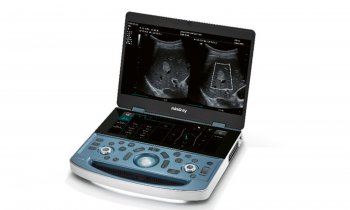Image source: Pexels/cottonbro
News • Radiofrequency myth debunked
No, smartphones are not a driver of brain tumour risk (not even with 5G)
Longstanding fears that using mobile phones may increase the risk of developing a brain tumour have been reignited recently by the launch of 5G (fifth generation) mobile wireless technologies. Mobile phones emit radiofrequency waves which, if absorbed by tissues, can cause heating and damage.
Since mobile phones are held close to the head, the radiofrequency waves they emit penetrate several centimetres into the brain, with the temporal and parietal lobes being most exposed. This has led to concern that mobile phone users may be at an increased risk of developing brain tumours, with the International Agency for Research on Cancer (IARC) classifying radiofrequency waves as ‘possibly carcinogenic.’ However, most of the studies that have investigated this question to date have been retrospective studies in which individuals report mobile phone use after a diagnosis of cancer, meaning that the results may be biased.
Now, researchers from Oxford Population Health and IARC have reported the results of a large UK prospective study (a study in which participants are enrolled before they develop the disease(s) in question) to investigate the association between mobile phone use and brain tumour risk. The results are published in the Journal of the National Cancer Institute.
Nevertheless, given the lack of evidence for heavy users, advising mobile phone users to reduce unnecessary exposures remains a good precautionary approach
Joachim Schüz
The researchers used data from the UK Million Women Study: an ongoing study which recruited one in four of all UK women born between 1935 and 1950. Around 776,000 participants completed questionnaires about their mobile phone usage in 2001; around half of these were surveyed again in 2011. The participants were then followed up for an average of 14 years through linkage to their NHS records. Mobile phone use was examined in relation to the risk of various specific types of brain tumour: glioma (a tumour of the nervous system); acoustic neuroma (a tumour of the nerve connecting the brain and inner ear); meningioma (a tumour of the membrane surrounding the brain); and pituitary gland tumours. The researchers also investigated whether mobile phone use was associated with the risk of eye tumours.
Key findings:
- By 2011, almost 75% of women aged between 60 and 64 years used a mobile phone, and just below 50% of those aged between 75 and 79 years
- Over the 14 year follow-up period, 3,268 (0.42%) of the women developed a brain tumour
- There was no significant difference in the risk of developing a brain tumour between those who had never used a mobile phone, and mobile phone users. These included tumours in the temporal and parietal lobes, which are the most exposed parts of the brain
- There was also no difference in the risk of developing glioma, acoustic neuroma, meningioma, pituitary tumours or eye tumours
- There was no increase in the risk of developing any of these types of tumour for those who used a mobile phone daily, spoke for at least 20 minutes a week and/or had used a mobile phone for over 10 years
- The incidence of right-sided and left-sided tumours was similar in mobile phone users, even though mobile phone use tends to be considerably greater on the right than the left side
Co-investigator Kirstin Pirie from Oxford Population Health’s Cancer Epidemiology Unit said: ‘These results support the accumulating evidence that mobile phone use under usual conditions does not increase brain tumour risk.’
Although the findings are reassuring, it remains unclear whether the risks associated with mobile phone use are different in those who use mobile phones considerably more than was typical of women in this cohort. In this study, only 18% of phone-users reported talking on a mobile phone for 30 minutes or more each week. Those who use mobile phones for long durations can reduce their exposure to radiofrequency waves by using hands-free kits or loudspeakers.
The study did not include children or adolescents, but researchers elsewhere have investigated the association between mobile phone use and brain tumour risk in these groups, not finding any association. Lead investigator Joachim Schüz from IARC said: ‘Mobile technologies are improving all the time, so that the more recent generations emit substantially lower output power. Nevertheless, given the lack of evidence for heavy users, advising mobile phone users to reduce unnecessary exposures remains a good precautionary approach.’
Source: University of Oxford
30.03.2022











